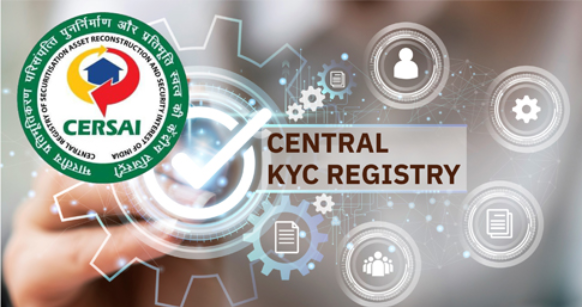Central Know Your Customer
Central KYC Registry is a centralized repository of KYC records of customers in the financial sector with uniform KYC norms and inter-usability of the KYC records across the sector with an objective to reduce the burden of producing KYC documents and getting those verified every time when the customer creates a new relationship with a financial entity.

Features of CKYC
- CKYC is a 14 digit number linked with the ID proof.
- Customer's data is safely stored in an electronic format.
- The documents submitted are verified with the issuer.
- All the concerned institutions are notified when there are changes in KYC details.
Benefits of Central KYC Registry
- CKYC registry enables financial companies to verify documents at ease.
- Investors need not submit KYC documents each time before starting a new financial relationship with a new financial company.
- Investors have access to update their details in the CKYC registry.
- You can use the CKYC number when buying or investing in various financial instruments such as an insurance policy, investing in mutual funds, and stock markets.
The modern world is such that people want things to happen in a matter of a few minutes. The old process of starting a financial relationship with a financial company was tedious and you had to submit KYC documents. With the introduction of the CKYC registry, the documentation process has become simpler, quicker and, most importantly safer.
What is the purpose of CKYC?
CKYC refers to Central KYC (Know Your Customer), an initiative of the Government of India. The aim of this initiative is to have a structure in place which allows investors to complete their KYC only once before interacting with various entities across the financial sector.
Periodic Updation of KYC (Re-KYC)
As per RBI guidelines on KYC norms, Banks need to update KYC documents periodically in the records of their account holders.
Therefore, in addition to the KYC carried out at the time of account opening, the account holders are required to undergo Re-KYC and submit the requisite documents at periodic interval, to avoid any restriction being placed in the account as per guidelines.
How to submit Re-KYC documents
Visit your nearest / any branch and submit the duly signed Re-KYC form & copy of valid KYC documents. Email / Post / Courier / Physical delivery of duly signed self-declaration form in case of no change in KYC information / change of address only.
For Individuals
- • Self-declaration in case of no change in KYC information (including PAN / Form 60) of Individual Customer Download PDF
- • RE KYC form for Non-Individuals in case there is change in information of Non – Individual Customer Download PDF
For Non-Individuals
- • Self-declaration in case of no change in KYC information of Non-Individual customer Download PDF
- • Re-KYC form for Non-Individuals in case there is change in KYC information of Non-Individual customer Download PDF
- • Declaration of Beneficial Owner Download PDF
Additional Information
- • To know list of valid KYC documents Download PDF
Frequently Asked Questions
What is Central KYC Registry?
Who can get access to Central KYC application?
What is the purpose of CKYC?
Who needs to complete CKYC?
What is the CKYC identifier?
How can I complete the CKYC process?
- Visit your Nearest branch
- Fill out the CKYC form.
- Provide self-attested copies of required documents (e.g., PAN, Aadhaar, passport).
- Submit your photograph.
What documents are required for CKYC?
- proof of Identity (PoI): Aadhaar, PAN, Passport, Voter ID, etc.
- Proof of Address (PoA): Aadhaar, utility bills, passport, etc.
Do I need to complete CKYC separately for every institution?
How long does it take to get the CKYC ID?
How can I update my CKYC details?
Is CKYC mandatory?
How is CKYC different from KYC?
How is CKYC related to eKYC?
- CKYC: Centralized KYC repository for multiple institutions.
- eKYC: Paperless KYC verification process using Aadhaar data.
